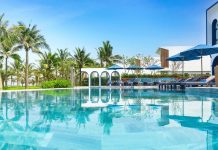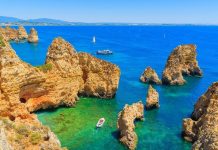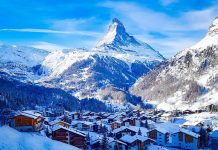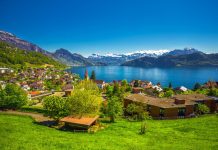Here’s a simplified, practical guide to walking the Camino de Santiago, focusing on routes, hostels, and hidden Galicia:
Core Walking Routes (Simplified):
- Camino Francés (French Way): The Classic. Starts in St-Jean-Pied-de-Port (France) or Roncesvalles (Spain). ~780km. Best infrastructure, busiest, diverse landscapes, iconic spots (Pyrenees, Meseta, O Cebreiro). Best for: First-timers, community, full experience.
- Camino Portugués (Portuguese Way): Coastal or Central. Starts in Porto (Portugal). Coastal (~280km) is scenic, quieter. Central (~260km) is more traditional, slightly hillier. Both merge at Redondela. Best for: Shorter time, coastal views, great food.
- Camino del Norte (Northern Way): Coastal Challenge. Starts in Irún. ~825km. Stunning Atlantic views, hilly, tougher walking, less crowded, excellent seafood. Best for: Experienced walkers, solitude, beaches.
- Camino Primitivo (Original Way): Mountainous & Authentic. Starts in Oviedo. ~320km. Challenging climbs, stunning green mountains, less crowded, considered the oldest route. Joins Francés in Melide. Best for: Challenge, scenery, quieter experience.
- Camino Inglés (English Way): Short & Sweet. Starts in Ferrol (~110km) or A Coruña (~75km – min. distance for Compostela). Historic route for medieval pilgrims arriving by boat. Quick, green Galicia. Best for: Limited time, still earning Compostela.
Pilgrim Hostels (Albergues): Simplified Logistics
- What They Are: Budget, basic accommodation exclusively for pilgrims with a Credencial (Pilgrim Passport). Dorm rooms, bunk beds, shared bathrooms/kitchens.
- Cost: €8-€15 per night (municipal/parish) or €10-€20+ (private). Donativos (donation-based) exist but are rarer.
- Booking: CRUCIAL in peak season (May-Sept) & on popular routes (Francés/Portugués last 100km). Book 1-2 days ahead via apps (Gronze, Camino Ninja, Buen Camino), websites, or phone. Municipal albergues often don’t take bookings – arrive early (2-4 pm).
- Key Features:
- Credencial Required: Get yours from a Camino association, church, or major starting point albergue.
- Check-in/out: Usually 1-4 pm check-in, 8-10 am check-out. Curfews (10 pm-11 pm) are common.
- Facilities: Basic kitchens (utensils vary), washing machines (€3-€5)/drying lines, sometimes wifi (unreliable). Bring earplugs & eye mask!
- Etiquette: Respect quiet hours (often 10 pm – 6 am), clean up, be considerate of snorers/early risers/late arrivals. Help with chores if asked.
Hidden Galicia: Beyond the Final Kilometers
While the last 100km into Santiago are beautiful, explore deeper:
- The Ancares & Courel Mountains (Primitivo/Norte): Wild, remote landscapes, traditional pallozas (stone huts), ancient forests. Detour from Lugo or Triacastela.
- Rías Baixas (Coastal Portugués/Norte): Don’t rush past! Explore fishing villages like Combarro (famous hórreos – grain stores), Cambados (Albariño wine capital), Illa de Arousa. Seafood feasts!
- Costa da Morte (Beyond Finisterre/Muxía): Rugged “Coast of Death” west of Finisterre. Dramatic cliffs (Cabo Vilán), shipwreck history, lighthouses, secluded beaches like Praia do Rostro. Powerful atmosphere.
- Inland Ribeira Sacra (Near Sanabres/Vía de la Plata): Stunning canyons of the Sil River, terraced vineyards producing Mencía wine. Boat trips (catamaranes) from Os Peares or Santo Estevo Monastery offer incredible views.
- Secret Monasteries: Beyond Oseira (on Sanabres):
- Sobrado dos Monxes (Norte): Massive, imposing Baroque monastery. Impressive cloisters.
- Monfero (Norte): Striking baroque facade integrated with ruins in a forested valley.
- Authentic Villages Off the Main Drag:
- Mondoñedo (Norte): Charming historic town with a stunning cathedral, often overlooked.
- Betanzos (Inglés): Beautiful medieval old town on the Mandeo river, known for its Gothic churches and tortillas.
- Allariz (Sanabres/Vía de la Plata): Well-preserved medieval town on the Arnoia river, great for wandering.
Practical Trail Tips:
- Packing: LESS IS MORE! Max 10kg. Essentials: broken-in hiking shoes/boots, quick-dry clothes, rain gear (poncho!), sleeping bag liner (essential for albergues), refillable water bottle, basic first aid (blister care!), headlamp, lightweight towel, Credencial. No sleeping bag needed in albergues May-Sept.
- Waymarking: Excellent! Yellow arrows, scallop shells, stone markers. Pay attention, especially at junctions. Apps (like the ones mentioned) provide GPS backup.
- Food: Pilgrim menus (€10-€15) are plentiful. Embrace local: Pulpo (octopus), Padrón peppers, empanadas, Albariño wine, Santiago cake. Cafés con leche are fuel! Supermarkets for picnics.
- Luggage Transport: Available if needed (€3-€8/bag/day). Book via transport companies (JacoTrans, NCS, etc.) or your albergue/hotel.
- The Compostela: Walk at least the last 100km (bike 200km) collecting 2 stamps/day in your Credencial to receive the certificate in Santiago. The “Distance” certificate is for shorter distances.
- Finisterre/Muxía: Many walk 3 extra days (88km) to the “End of the World” coast. Highly recommended for closure.
Remember: The Camino is your own journey. Walk your own pace, embrace simplicity, be open, and say “¡Buen Camino!” to fellow pilgrims. The magic often lies in the unexpected encounters and the rhythm of walking. Enjoy discovering both the famous path and the hidden corners of Galicia!
















